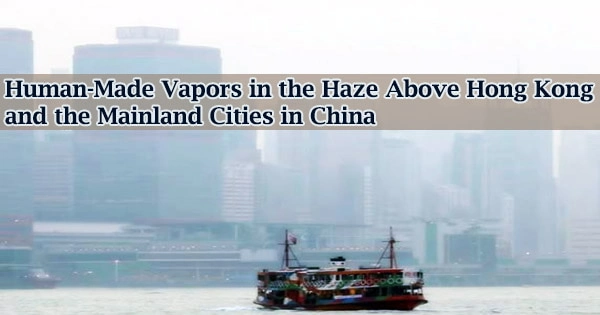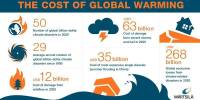With the help of international researchers, Prof. WANG Zhe, Assistant Professor at the Division of Environment and Sustainability at the Hong Kong University of Science and Technology (HKUST), has revealed the significant contributions that low-volatility organic vapors from human activity have made to the formation of secondary organic aerosols (SOA) in four Chinese megacities, offering fresh perspectives for effectively addressing the problem of urban air pollution.
The biggest environmental health danger is air pollution, which claims the lives of about 7 million people annually. Air pollutants may be produced by complicated atmospheric interactions including precursors from both natural (such as plants) and manmade sources, or they may be released directly through a variety of emission sources (e.g. traffic, coal combustion, etc).
Due to the significant information gaps in the underlying formation mechanisms, it has proven extremely difficult to mitigate secondary pollutants even while pollution management techniques are efficient in reducing primary pollutants.
With substantial effects on the environment and human health, SOA makes up a sizeable portion of the particle haze pollution in many developed areas. Implementing efficient solutions to reduce haze pollution is hampered by knowledge gaps in the underlying chemical processes and sources of SOA generation.
This collaborative study supported the predominance of low-volatility organic vapors produced by humans as important intermediaries linking SOA and haze pollution in urban environments to the oxidation of volatile organic compounds (VOCs).
The HKUST researchers carried out an extensive field study in Hong Kong, and at the same time, coordinated studies were done in three additional Chinese megacities: Beijing, Nanjing, and Shanghai by mainland and foreign scholars.
The combined research identified numerous highly reactive oxygenated organic molecules (OOMs) in various urban environments for the first time. It also created a novel classification framework to link the measured OOMs and produced SOA to various precursors.
The findings demonstrated that oxidation of man-made VOCs, which contributes roughly 40% of aromatics and another 40% of aliphatic hydrocarbons, an underappreciated class of VOCs, dominates OOMs generation in the urban atmosphere.
According to the study, multi-step oxidation and auto-oxidation processes are important in the development of OOMs, and nitrogen oxides (NOx) have a substantial impact on the oxidation of VOCs, leading to the production of a sizable portion of organic compounds that include nitrogen. Even in the presence of extreme haze conditions, the irreversible condensation of these anthropogenic OOMs is a major cause of SOA.
Over 800 million people live in China’s three most urbanized regions, where the study found a strong similarity in the distribution and creation paths of OOMs.
It suggests the idea of using a standardized and efficient mitigation technique to address the problem of air pollution throughout these densely populated city clusters. The scientific publication Nature Geoscience recently published the study’s findings. One of the co-first authors of the work is Prof. WANG Zhe from HKUST’s ENVR.
The other co-first authors include Prof. NIE Wei and Prof. YAN Chao from Nanjing University and Prof. HUANG Dandan from Shanghai Academy of Environmental Sciences (a former Ph.D. graduate from HKUST).
Scientists from the US, Finland, Switzerland, Macau, Hong Kong, and mainland China were among the other authors that contributed. The National Natural Science Foundation of China and the Hong Kong Research Grants Council provided funding assistance for the study.
















